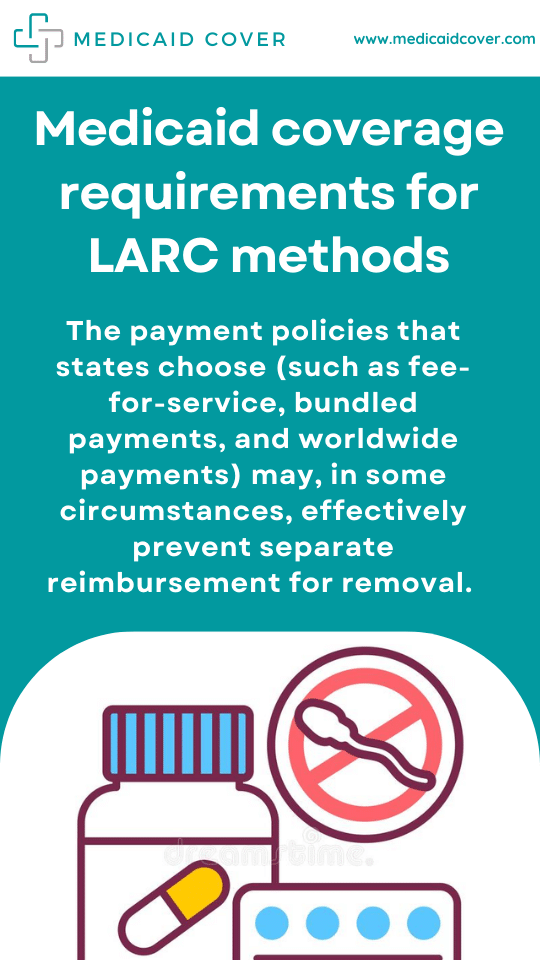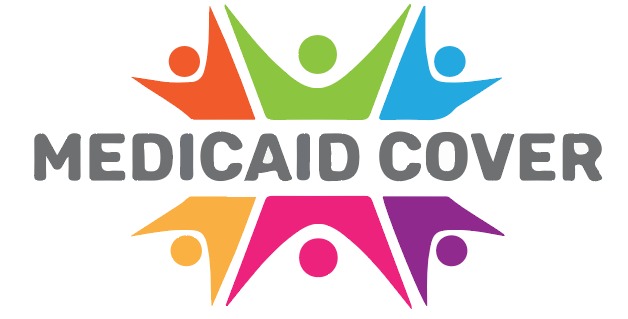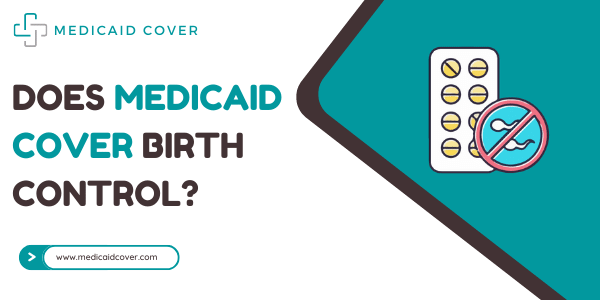Before going to deep dive into “Does Medicaid cover birth control” read some facts about Medicaid. Since 1965, Medicaid has provided Americans with low incomes and access to inexpensive health insurance coverage.
More than 81 million Americans are eligible for health coverage through the federal Medicaid program. The majority of states offer free birth control coverage through Medicaid.
A big yes to Medicaid, which provides free birth control. Did you about that Medicaid For Pregnant Women?
Medicaid, Women And Families
About one in every fifth of women of reproductive age in the United States uses Medicaid to get free primary medical care. There are 16.75 million women in this age range.
About two-thirds of Medicaid-eligible adult women are in their reproductive years.
Most public funds are used for family planning services like birth control—75% of all monies are paid for by Medicaid, making it the biggest payer of reproductive health care coverage.
For 42% of women giving birth, Medicaid provides coverage for prenatal care, delivery care, and other necessary pregnancy services.
The ACA’s requirements for birth control coverage are not binding on all insurers. Birth control coverage is not required for religious institutions, nonprofit organizations, or religious schools.
Birth control is a requirement for women whose insurance is provided by a religious employer and must be paid for out-of-pocket. However, women can use third-party insurance to cover the cost of birth control fully.
Read Also: Does Medicaid cover Ambulance also? Check in detail
Does Medicaid Cover Breast Reduction?
Medicaid Coverage Requirements For LARC Methods
Since 1972, all state Medicaid programs have been obligated by federal law to provide enrolled people of reproductive age and family planning services and supplies free of charge. States have considerable latitude when determining the precise set of covered family planning services and products.

States also have the freedom to establish utilization limitations that restrict the accessibility of covered services and supplies, such as prior authorization. Medicaid family planning coverage differs by the state due to several factors.
Although the majority, if not all, states provide some type of coverage for LARC procedures, different states may likely have different regulations regarding certain methods or the circumstances under which they are covered. For information on state-specific coverage, providers should refer to the Medicaid provider manual(s) for their state.
Additionally, providers should keep an eye on Medicaid payments to ensure that policies in the provider handbook are followed regarding reimbursement and payment procedures.
Removal of LARC methods must comply with Medicaid regulations and implement policy concepts to be a covered Medicaid service.
The payment policies that states choose (such as fee-for-service, bundled payments, and worldwide payments) may, in some circumstances, effectively prevent separate reimbursement for removal.
Without a valid medical reason, certain states have also been known to refuse reimbursement for IUD removal.
For information on state-specific coverage guidelines and guidelines on how to charge for LARC method removal when the treatments are covered, providers should check their state Medicaid provider manual(s).
Family Planning With Medicaid
Even if individuals don’t meet other eligibility conditions, some states expanded part or all Medicaid health benefits under the Affordable Care Act (ACA), which was implemented in 2010. States could decide to provide all Medicaid benefits to a wider population or only family planning services.
The coverage requirements for those who qualify under the expansion must follow stricter guidelines in the 38 states (including Washington, D.C.) that opted into the full Medicaid expansion. Like most commercial insurers, these state Medicaid programs must offer patients free preventative care, including contraception.
Federal regulations require state Medicaid programs to offer family planning services to patients at no cost. Family planning as a broad category might encompass contraception and other associated services, including testing for cancer, HIV, and STDs.
Federal regulations don’t specify which services states must include in family planning coverage beyond that broad mandate.
Because of this, the list of what is wholly covered may vary depending on where you live. Nevertheless, according to the Kaiser Family Foundation, when individuals think of family planning services, they typically think of birth control, which is covered by most states.
Several states expanded part or full Medicaid health benefits to extra low-income Americans under the Affordable Care Act, or ACA, passed in 2010.
How Can Uninsured Women Access Low?
Women who are unemployed or earn less than a particular annual income may qualify for Medicaid, a program meant to give low-income people access to health coverage.
Most Planned Parenthood locations accept Medicaid insurance plans for contraception and charge on a sliding scale according to household size and income. To help women who require birth control financially, Pandia Health also started the Birth Control Fund.
What Forms Of Birth Control Does Medicaid Cover?
Your state’s Medicaid program covers the U.S. Food and Drug Administration-approved methods of contraception if it offers that benefit.
These techniques can be grouped broadly into :-
- Hormonal techniques, like vaginal rings and birth control pills.
- Intrauterine devices, such as IUDs, are implanted.
- Barrier techniques, such as sponges and diaphragms.
- Sterilisation techniques
The ACA does not mandate vasectomy coverage; however, the Kaiser Family Foundation found that most state Medicaid programs it examined offered this service.
State Medicaid systems may restrict managing costs, similar to private insurance. This implies that there may be limitations on the kind or amount of medication you can purchase. Some over-the-counter contraceptive treatments may additionally require a prescription to be completely covered.
All health insurance plans are required by the Affordable Care Act to include FDA-approved methods of birth control, such as the following ones :-
- Birth control tablets with hormones
- Sterilization of both genders
Although your health insurance plan should provide coverage for all of these FDA-approved birth control methods, it’s still vital to remember to speak with your insurance provider before filling a prescription or booking an appointment. Every plan is unique, as are the types of contraception covered by each.
-
Medicaid And Work Requirements
Medicaid work requirements are ineffectual at reducing unemployment or assisting people in finding employment. People are also pushed off of Medicaid by work requirements. As follows:
Work requirement laws compel people to work and comply with regular, onerous reporting requirements to qualify for and maintain Medicaid coverage.
Many persons who might lose their Medicaid coverage due to the work requirements are already working or trying to work, but they have erratic schedules, have trouble with the reporting processes, or are oblivious to the new requirements.
Additionally, evidence demonstrates that Medicaid coverage itself aids people in finding or keeping jobs.
Medicaid work requirements obstruct access to necessary healthcare and services, especially for women. Women build up about two-thirds of those who may no longer qualify for Medicaid owing to employment requirements.
This is caused, in part, by the fact that women are more likely to perform unpaid informal caregiving or in low-wage jobs without health insurance.
-
Cost And Insurance Coverage
More than half of the 37 million American women needing contraceptive services in 2010 required publicly financed services, either because they were under 20 years old or their income fell below 250% of the federal poverty threshold.
In the USA, one in four women who use contraception goes to family planning clinics supported by public funds 21. From 2000 to 2010, 17% more women needed publicly financed contraceptive services or around three million women.
By lowering unwanted pregnancy, increasing access to publicly financed family planning services reduces costs.
Because of the contraceptive services offered at publicly funded clinics, the federal and state governments saved an estimated $7.6 billion in 2010.
Obstetrician-gynecologists may be steadfast supporters of the continuous expansion of affordable contraception access when the ACA takes effect because it has been demonstrated that doing so is, at worst, cost neutral and, at best, cost-saving 22 and 23.
Limits on the quantity of provided contraceptives are another insurance obstacle. According to data, offering a year’s worth of contraceptives boosts adherence and continuation rates while being cost-effective.
Most women are unable to get contraceptive refills on time, and 73% of women are only able to receive one month’s worth of contraception at a time due to insurance plan limits. 26-28-29. .
What If You Don’t Have Medicaid?
There are options for birth control if you do not have Medicaid, Marketplace, employer-sponsored health insurance, or any of those. Contraception is a service by Planned Parenthood and other organizations supporting women’s reproductive health.
Women can receive free or inexpensive healthcare services from Planned Parenthood, including annual physicals, STD testing, birth control, and help with pregnancies.
This group, which has offices in every state and can assist you if you require birth control but don’t have health insurance, will help you locate the best solution to suit your circumstances.
Without health insurance, the price of birth control varies and is primarily based on the type you select. In general, hormonal birth control tablets are the most affordable and highly effective option.
If You Have Medicaid Or CHIP
You will get coverage for 60 days beyond delivery if you are determined to be eligible during your pregnancy. You might no longer be eligible after 60 days.
Your state’s Medicaid or CHIP organization will inform you if your coverage expires. You can enroll in any Marketplace plan during this period to prevent a coverage gap.
Your newborn will be automatically enrolled in Medicaid coverage and eligible for it for at least a year if you have Medicaid at the delivery time.
How Much Do Birth Control Pills Cost?
The cost of birth control pills varies according to your health insurance status and whether you are eligible for Medicaid or any other government programs that pay for them. One pill box from most manufacturers lasts one month and costs between $0 and $50.
However, they are entirely free if you have a health insurance plan or are eligible for some government programs. Using the Planned Parenthood Direct app, you can obtain birth control prescribed and mailed to you.
You might also be required to pay for a doctor’s or nurse’s visit to obtain a prescription for the medication. The price of this visit might range from $35 to $250.
However, the Affordable Care Act requires that most insurance plans pay for medical visits related to birth control. Find out more about birth control and health insurance.
Whether you’re concerned about the expense, see if your local Planned Parenthood health center can provide you with birth control that fits within your spending limit.
Is Birth Control Free
Sometimes. You might get free access to birth control depending on your health insurance. If your insurance has a co-payment requirement, it might only be fifteen bucks.
If your health insurance does not make birth control inexpensive, organizations like Planned Parenthood and Pandia Health can offer individuals who qualify for low-cost birth control and sliding scale payments for birth control.
Getting The Most Coverage And Cost Savings
Make sure to choose the best plan for your needs to minimize the expense of your birth control.
To confirm that the prescription drugs you require are covered under the plans you are considering, speak with your healthcare practitioner, insurance provider, or benefits administrator.
Before selecting a birth control technique, reviewing your plan’s needs is crucial.
Final Thoughts :-
Prior to the ACA, Medicaid programs already provided free contraception, albeit they are not mandated to cover all FDA-approved methods.
Contact your local Medicaid office to learn more about the birth control options available.
States also have the choice to limit the availability of family planning services to those with low incomes who would otherwise be ineligible for Medicaid. This choice has expanded family planning services in just over half of the states.
Frequently Asked Questions
Does your Medicare plan cover contraceptives?
If birth control pills are deemed medically necessary, some Medicare Part D plans may cover them; however, this will depend on the plan’s formulary and the particular healthcare requirements of each Medicare beneficiary. Condoms and IUDs are examples of preventative products that Medicare does not pay for.
Does Medicaid cover maternity hospitals?
Midwifery services and a birth center. Pregnant women with low medical risk pregnancies can get reimbursement from Medicaid for the obstetrical services provided by certified birth facilities and midwives. This service is one of the minimum ones for all Managed Medical Assistance programs that serve Medicaid enrollees must provide coverage.

